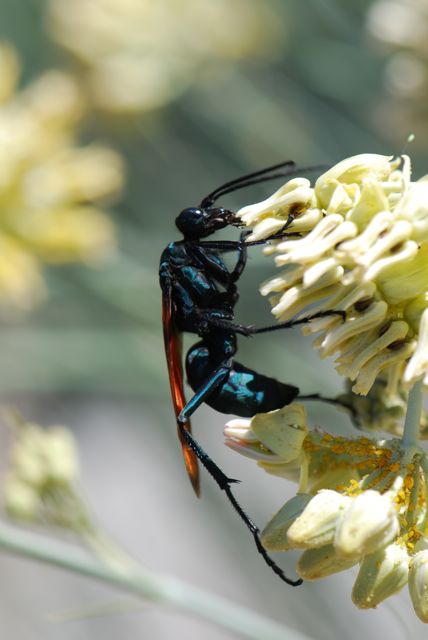The rush milkweed (also called desert milkweed) plants are in bloom.
Turns out the buds, flowers, and seed pods are a bounty of food for insects.
If you have been following Bug of the Week, you can probably recognize some of the seven insects that I found on the rush milkweed today.
- What are the yellow-orange insects?
2. How about this red and black one?
3. What is this insect? What do you think it’s waiting for?

4. Here’s another waiting insect. What is it?

5. This one is tricky. What do you think it is?

6. This is another tough one. We’ve already looked at the yellow orange insects. So, what is the pale green oval at the end of the hairlike stalk?

7. Finally, who is this striped cutie?
Milkweeds are home to some interesting insects. Do you have any milkweeds growing nearby?
Edit:Â The answers are now posted.















